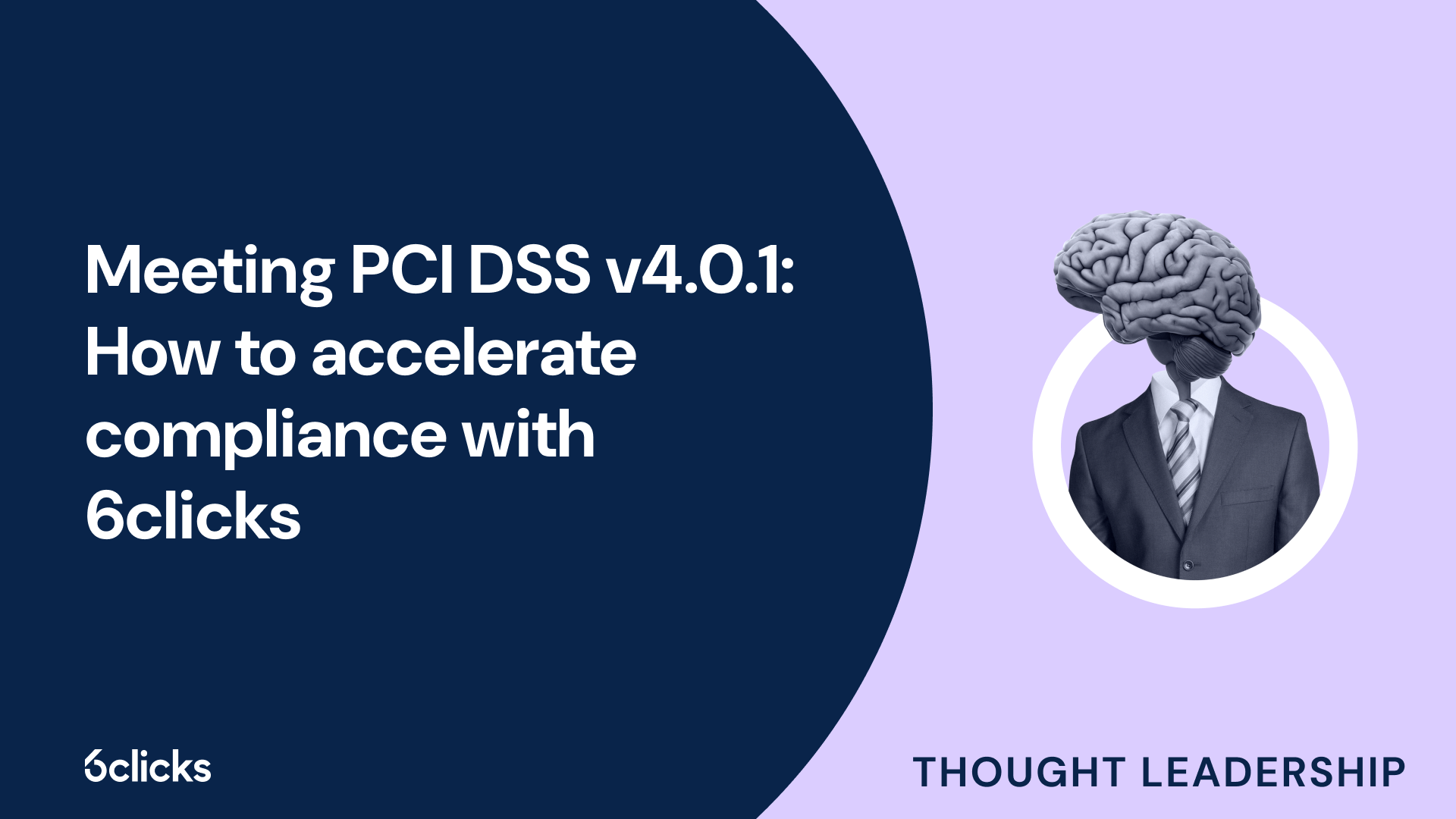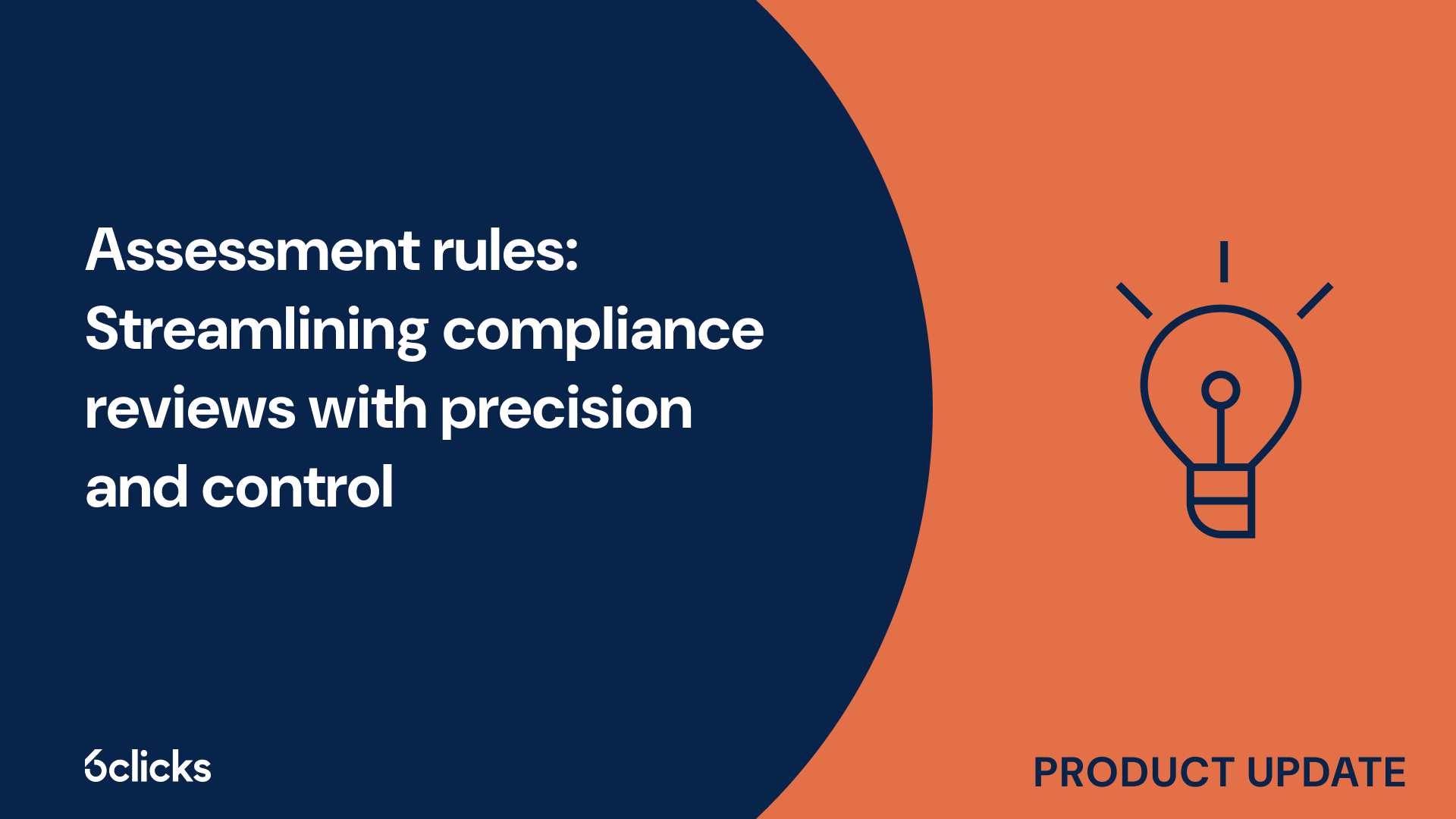Third-Party Risk Management Expert Guide
Get the Third-Party Risk Management Expert Guide to master vendor risk strategies, improve compliance, and safeguard your business. Download now!
-1.png?width=200&height=249&name=Group%20193%20(1)-1.png)
Third-Party Risk Management Expert Guide
Definition of risk management
Risk management is a crucial aspect for businesses and individuals alike to navigate through uncertainties and potential risks that may arise in various areas of operation. It involves the process of identifying, assessing, and prioritizing risks, as well as developing and implementing strategies to mitigate or minimize those risks. There are three main types of risk management: financial risk management, operational risk management, and strategic risk management. These types address different aspects of potential risks, ensuring that organizations have comprehensive plans in place to protect their interests and minimize potential losses or negative impacts. Each type of risk management focuses on specific elements of risk, allowing organizations to better understand and manage the potential threats they may face in their day-to-day operations. By adopting a proactive approach to risk management, businesses and individuals can enhance their overall resilience and maintain a competitive edge in an ever-changing environment.
Overview of the three types of risk management
Risk management is a critical aspect of any organization's management strategy. It involves identifying, assessing, and managing potential risks that can hinder the achievement of business objectives. There are three main types of risk management: financial risk management, operational risk management, and strategic risk management.
Financial risk management focuses on mitigating risks related to financial transactions and investments. It includes managing risks such as credit risk (the risk of loss from a borrower's failure to repay a loan), market risk (the risk of financial loss due to changes in market conditions), and liquidity risk (the risk of not having enough cash to meet financial obligations). For example, insurance companies mitigate financial risks by diversifying their investment portfolio to avoid concentrated exposure.
Operational risk management deals with risks associated with internal processes, systems, and human error. It aims to identify and mitigate risks like supply chain risks, security risks, and business continuity risks. For instance, a manufacturing company may implement safety protocols and contingency plans to avoid operational disruptions caused by natural disasters or equipment failures.
Strategic risk management focuses on risks relating to an organization's long-term goals and objectives. It involves assessing risks associated with competitive threats, changes in the business environment, and unclear regulatory conditions. An example of strategic risk is the risk of losing market share due to technological advancements that make a company's product obsolete. To address this risk, companies may need to adapt their business models and invest in research and development.
Type 1: financial risk management
Financial risk management is a crucial component of any organization's risk management strategy. This type of risk management focuses on identifying and mitigating risks related to financial transactions and investments. It involves assessing and managing risks such as credit risk, market risk, and liquidity risk. Credit risk refers to the potential loss that can occur when a borrower fails to repay a loan, while market risk involves the risk of financial loss due to changes in market conditions. Liquidity risk, on the other hand, pertains to the risk of not having enough cash to meet financial obligations. Effective financial risk management helps organizations diversify their investment portfolio, implement risk controls, and ensure they have adequate cash reserves to maintain financial stability.
Definition of financial risk management
Financial risk management is the process of identifying, analyzing, and mitigating potential financial risks that can result in capital losses for individuals and businesses. It is a crucial aspect of risk management, as it helps individuals and organizations to safeguard their finances and make informed decisions.
The first step in financial risk management is the identification of potential risks. This involves understanding the various factors that can impact the financial stability of an individual or business, such as market fluctuations, interest rate changes, credit fluctuations, and operational issues. By recognizing these risks, individuals and businesses can proactively prepare to address them.
Once the risks are identified, the next step is to analyze and assess their potential impact. This involves evaluating the likelihood of the risks occurring and estimating the severity of the potential losses. With this analysis, individuals and organizations can prioritize their focus on the most significant risks and allocate resources accordingly.
The final step in financial risk management is mitigation. This involves implementing strategies to minimize the impact of potential risks. Strategies may include diversifying investments, implementing risk controls and safeguards, hedging against market fluctuations, and maintaining sufficient liquidity to meet financial obligations.
Common types of financial risks that financial risk management addresses include credit risk, which refers to the risk of default by borrowers; liquidity risk, which involves the inability to meet financial obligations; and operational risk, which encompasses risks arising from internal processes, systems, and human errors.
Examples of financial risks and how they are managed
Financial risk management is essential for individuals and businesses to protect their financial well-being. By understanding and managing various types of financial risks, they can minimize potential losses and ensure stability.
One common example of financial risk is market risk. It refers to the possibility of losses due to market fluctuations. To manage market risk, individuals and businesses can diversify their investment portfolios, monitor market trends, and employ hedging techniques like options and futures contracts.
Credit risk is another significant type of financial risk. It involves the potential of borrowers defaulting on their payments. To mitigate credit risk, lenders conduct thorough credit assessments, set appropriate lending limits, and establish credit risk controls and procedures.
Liquidity risk refers to the risk of being unable to meet financial obligations. This risk can be managed by maintaining sufficient cash reserves, establishing lines of credit, and diversifying funding sources.
Operational risks stem from internal processes, systems, and human errors. To manage operational risk, businesses can implement robust internal controls, conduct regular risk assessments and staff training, and establish contingency plans for potential disruptions.
Legal risks arise from legal and regulatory issues, such as lawsuits or non-compliance with applicable laws. Managing legal risks involves staying updated on relevant regulations, obtaining expert legal advice, and implementing compliance procedures.
Benefits of financial risk management
Financial risk management plays a crucial role in ensuring the stability and success of organizations. Effectively managing financial risks comes with a multitude of benefits that can greatly impact the overall performance and competitiveness of a company.
One of the primary benefits of financial risk management is the increased awareness of risk across the organization. By implementing comprehensive risk management strategies, organizations gain a deeper understanding of potential risks and their impact on business operations. This increased awareness enables companies to proactively identify and address risks, minimizing the likelihood of financial setbacks and enhancing decision-making processes.
Furthermore, financial risk management helps organizations align their objectives and goals with their risk appetite. By consistently evaluating and managing risks, companies can ensure that their strategies and activities are in line with their risk tolerance. This alignment instills confidence within the organization, as stakeholders have a clear understanding of the potential risks involved and can make informed decisions to mitigate them.
Compliance with regulatory and internal mandates is another crucial benefit of financial risk management. By identifying and addressing risks associated with regulatory requirements, organizations can reduce the likelihood of penalties, fines, and legal issues. Additionally, a robust risk management framework promotes better adherence to internal policies and procedures, ensuring a more efficient and ethical operation.
Financial risk management also contributes to improved operational efficiency. By identifying and mitigating potential risks, companies can streamline their processes and reduce the likelihood of disruptions. This leads to increased productivity, cost savings, and optimized resource allocation.
Moreover, financial risk management enhances workplace safety. By proactively managing risks associated with workplace hazards, organizations can create a safer environment for their employees. This not only protects individuals from harm but also minimizes potential legal and financial liabilities.
Lastly, effective financial risk management provides organizations with a competitive edge in the marketplace. By demonstrating a proactive approach to risk management, companies instill confidence in their stakeholders, including customers, investors, and partners. This competitive advantage can lead to increased market share, improved reputation, and long-term sustainability.
Challenges with financial risk management
Challenges with financial risk management arise due to the inherent nature of uncertainty in financial markets and business operations. Businesses face several hurdles in effectively managing financial risks, despite their efforts to eliminate or reduce them.
One of the main challenges is the inability to completely eliminate financial risks. No matter how well-prepared an organization is, there will always be factors beyond their control that can impact financial stability. External risks such as market fluctuations, changes in government regulations, or natural disasters can severely affect businesses. It is crucial for organizations to be aware of these risks and develop strategies to mitigate their potential harm.
Another challenge is the need for risk awareness across the organization. It is not enough for the finance department alone to be aware of financial risks. All employees, from top management to front-line staff, should have a clear understanding of the potential risks and their implications. This requires constant communication, training, and a culture of risk awareness within the company.
Furthermore, the complexity of financial risk management requires comprehensive strategies to mitigate harm and reduce negative outcomes. This includes diversifying investments, implementing risk controls, and purchasing relevant insurance coverage. It is essential for businesses to regularly assess and reassess their risk profiles, as well as stay up-to-date with industry best practices and regulatory requirements.
Type 2: operational risk management
Operational risk management involves identifying, assessing, and mitigating potential risks arising from the day-to-day operations of a business. It focuses on the internal processes, systems, and human factors that could lead to financial loss or harm to the organization. Operational risks can stem from various sources such as inadequate internal controls, human error, system failures, and legal or compliance issues. Effective operational risk management requires businesses to develop robust control mechanisms, implement preventive measures, and continuously monitor and evaluate the effectiveness of these controls. This proactive approach helps organizations identify and address potential risks before they materialize, ensuring the smooth functioning of operations and safeguarding the organization's financial stability. By implementing operational risk management strategies, businesses can enhance operational efficiency, protect their reputation, and maintain a resilient and sustainable operation in the face of uncertainties and risks.
Definition of operational risk management
Operational risk management is a critical aspect of the broader field of risk management. It specifically focuses on identifying, assessing, and mitigating risks that arise from internal processes, systems, and people within an organization. While other types of risks, such as financial or market risks, may be associated with external factors, operational risks are unique in that they pertain to internal activities and operations.
Unlike other types of risks, operational risks directly stem from the day-to-day activities and functions within an organization. These risks can include human errors, technology failures, fraud, legal and regulatory issues, supply chain disruptions, and natural disasters. The impact of operational risks can be significant, leading to financial losses, reputational damage, customer dissatisfaction, and even legal consequences.
For example, a manufacturing company may face an operational risk of production line breakdowns, resulting in delayed deliveries and loss of revenue. Similarly, a financial institution may encounter operational risks related to cyberattacks, which can compromise customer data and trust.
To effectively manage operational risks, organizations employ various strategies and techniques, such as implementing internal controls, establishing risk assessment processes, conducting regular audits, and maintaining business continuity plans. By identifying potential risks and implementing appropriate risk mitigation measures, organizations can minimize the impact of operational risks and protect their financial stability and reputation.
Examples of operational risks and how they are managed
Operational risks encompass a wide range of potential hazards that can arise from the day-to-day operations of a business. These risks can have a significant impact on the organization's financial stability, reputation, and ability to deliver products or services. Here are a few examples of operational risks and how they can be managed:
- Supply Chain Disruptions: A company heavily dependent on its supply chain can face operational risks such as delays, shortages, or quality issues. To manage this risk, organizations can establish relationships with multiple suppliers, conduct regular audits of suppliers' capabilities and practices, and implement backup plans in case of disruptions.
- Delivery of Products: Operational disruptions can also occur in the delivery of products or services to customers. For example, a transportation company may face risks associated with accidents, delivery delays, or damage to goods. To mitigate these risks, businesses can invest in proper training for drivers, perform regular vehicle maintenance, and implement real-time tracking systems.
- IT System Failures: With the increasing reliance on technology, operational risks related to IT system failures, cyberattacks, or data breaches have become more prevalent. To manage this risk, organizations can implement robust cybersecurity measures, regularly update their systems and software, perform backups of critical data, and conduct regular employee training on cybersecurity best practices.
Effective risk management involves identifying potential risks, assessing their likelihood and severity, implementing control measures to prevent or mitigate these risks, and regularly monitoring and reviewing the effectiveness of these measures. By proactively managing operational risks, businesses can enhance their resilience and increase their chances of long-term success.
Benefits of operational risk management
Operational risk management is a crucial component of any organization's risk management strategy. It involves identifying, assessing, and mitigating potential risks that may arise from day-to-day operations. By implementing an effective operational risk management program, organizations can reap several benefits that contribute to their overall success.
One key benefit of operational risk management is increased awareness of risk across the organization. It allows businesses to identify and understand the potential risks they face, thus enabling them to develop appropriate risk management strategies. This heightened risk awareness ensures that potential risks are not overlooked or underestimated, minimizing the likelihood of negative events occurring.
Operational risk management also plays a vital role in ensuring regulatory compliance. By identifying compliance risks and implementing appropriate controls, organizations can proactively meet regulatory mandates. This not only avoids potential penalties and legal issues but also enhances the organization's reputation and credibility.
Furthermore, operational risk management enhances operational efficiency. By identifying and mitigating potential risks, organizations can streamline their processes, reduce operational disruptions, and minimize costly errors. This leads to improved productivity, cost savings, and overall operational effectiveness.
Another benefit of operational risk management is the promotion of workplace safety. By identifying and addressing risks related to employee health and safety, organizations can create a safe working environment. This not only protects employees from harm but also reduces accidents, injuries, and subsequent legal and financial liabilities.
Lastly, an effective operational risk management program can serve as a competitive differentiator. Organizations that prioritize risk management demonstrate a commitment to their stakeholders' interests and are perceived as more trustworthy and reliable. This can give them a competitive advantage in the market, attracting customers, investors, and business partners.
Challenges with operational risk management
Challenges with operational risk management arise from the potential sources of operational risks and their impacts on businesses. These challenges include difficulties in anticipating and proactively managing risks such as technological failures, human error, and supply chain disruptions.
One of the key challenges in operational risk management is effective risk identification. It can be challenging to identify all the potential sources of operational risks within an organization. These risks can stem from inadequate internal processes, system failures, employee misconduct, or unexpected events such as natural disasters. Failure to accurately identify these risks can result in missed opportunities for prevention or mitigation.
Another challenge lies in implementing appropriate mitigation strategies. Once the risks have been identified, organizations need to develop and implement strategies to mitigate or minimize the impact of these risks. This can involve implementing strict controls and procedures, investing in technology and infrastructure, or developing contingency plans. However, determining the most effective mitigation strategies can be challenging, as it requires balancing the cost of implementation with the potential severity of the risk.
Ongoing monitoring is also a challenge in operational risk management. Risks can evolve over time, and new risks can emerge as the business environment changes. Therefore, organizations need to continuously monitor and reassess their risk profiles to ensure their risk management strategies remain effective. This requires a dedicated effort to track and analyze risk-related data, and to adjust risk management practices accordingly.
Type 3: strategic risk management
Strategic risk management is the process of identifying and addressing risks that are inherent in an organization's strategic objectives and goals. Unlike financial and operational risks, which focus on day-to-day activities, strategic risks are concerned with long-term planning and decision-making. These risks can arise from changes in the competitive landscape, shifts in customer preferences, regulatory changes, or technological advancements. It is crucial for organizations to proactively assess and manage strategic risks to ensure they are well-positioned to achieve their strategic objectives. Strategic risk management involves understanding the organization's risk appetite and tolerance, conducting risk assessments to identify potential risks, developing risk management strategies and plans, and regularly monitoring and reassessing the risks to adapt to any changes in the business environment. By effectively managing strategic risks, organizations can improve their ability to navigate uncertainties and capitalize on opportunities, ultimately enhancing their long-term success and sustainability.
Definition of strategic risk management
Strategic risk management is an integral part of an organization's overall risk management strategy. It involves anticipating, evaluating, and addressing potential risks and uncertainties that may hinder the achievement of the organization's strategic goals and objectives. This type of risk management focuses on identifying risks that may impact the organization's long-term success and developing strategies to mitigate or capitalize on them.
Strategic risk management goes beyond traditional risk management approaches that primarily focus on financial or operational risk. It encompasses a broader perspective, considering external factors such as market conditions, technological advancements, and legal and regulatory changes. The aim is to proactively identify and evaluate risks, allowing organizations to make informed decisions and take appropriate actions to manage these risks effectively.
By effectively managing strategic risks, organizations can enhance their ability to adapt to changing market dynamics, gain a competitive advantage, and achieve their long-term goals. It provides a framework for assessing risk appetite, prioritizing risks, and developing risk mitigation strategies. Strategic risk management is an essential aspect of organizational governance and supports the development and execution of strategies that drive sustainable success.
Examples of strategic risks and how they are managed
Examples of strategic risks include changes in market demand, technological disruptions, and shifting regulatory environments.
For instance, a company operating in the digital photography industry may face a strategic risk if there is a sudden decrease in consumer demand for standalone digital cameras due to the rise of smartphones with high-quality built-in cameras. To manage this risk, the company could invest in research and development to create innovative camera features that differentiate their product from smartphones. They could also focus on targeting niche markets or diversifying their product offerings to include other imaging devices or services.
Another example is a company in the transportation industry facing a strategic risk due to the implementation of stricter emission standards by regulatory authorities. To manage this risk, the company could invest in the development of hybrid or electric vehicles to comply with the new regulations. They could also explore alternative fuel sources or initiatives to reduce emissions, such as promoting public transportation.
These strategic risks can impact a business negatively by eroding market share, reducing profitability, or even leading to business failure. However, they can also present opportunities for growth and differentiation if managed effectively. Approaches to mitigate or harness these risks include conducting thorough market research, diversifying product offerings, investing in innovation, forming strategic partnerships, and staying informed about industry trends and regulatory changes.







